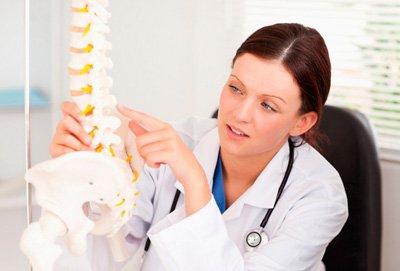
Spinal stenosis, abnormal compression or narrowing of a spinal canal, can occur in any part of the backbone. This leads to the pinching of spinal cords. This imposition causes pressure on nerve roots. Due to this pressure, the most patients experience different types of symptoms. i.e. pain, cramps, numbness, discomfort, fever, nocturnal pain, and more. Health conscious people must keep an eye on risk factors and symptoms and report to the nearest spine clinic for diagnosis. That will assist you receive the best treatment possible if required. Risk factors:
Certain factors contribute to this medical condition. However, the progressive rate of deterioration varies with person's medical history and treatment.
Age: The most common factor causing spinal stenosis is ageing. Inadvertently, ageing can lead to:
• Thickening of body's ligaments
• Development of bone spurs
• Bulging of inter-vertebral discs
• Break in facet joints
• Compression fracture in spine
• General wear and tear leading to osteoarthritis in spine
Heredity: Select patients are born with a small or narrowed spinal canal. In some cases, patients are born with structural deformities in a spine. It can cause spinal stenosis symptoms.
Trauma: Select accidents and sports injuries can increase the risk of having spinal stenosis.
Medical conditions: Osteoarthritis, spondylolisthesis, Rheumatoid arthritis and tumours in a spine can cause spinal stenosis and compress a part of a spinal canal.
Symptoms:
Spinal stenosis symptoms vary with the different types of spinal stenosis. Three types the medical condition are cervical, thoracic and lumbar spinal stenosis. The last one is the most common one. But, region of pains and pinched nerve roots change the symptoms substantially. In spite narrowing of a spinal canal, people may not develop spinal stenosis symptoms. i.e back pain, numbness, etc. So, this medical condition refers to symptoms than the spinal cord compression itself. So, here are some symptoms found in patients.
Common symptoms of spinal stenosis are back pain, weakness, cramping, and numbness. Patients experience discomfort arms, shoulder blade, thighs, calves, or buttocks. But, patients can experience radicular leg pain, loss of bladder or bowel control, fever, nocturnal pain, tingling and burning sensations too.
This medical condition is treatable and manageable. But it won't be cured 100%. However, with right medical treatment, it is possible to attain functional status and live a full and happy life. So, recommend a visit to a spine specialist to anyone who is vulnerable to spinal stenosis. Prevention would be a much painless and healthier choice in this case.
Leave a Comment